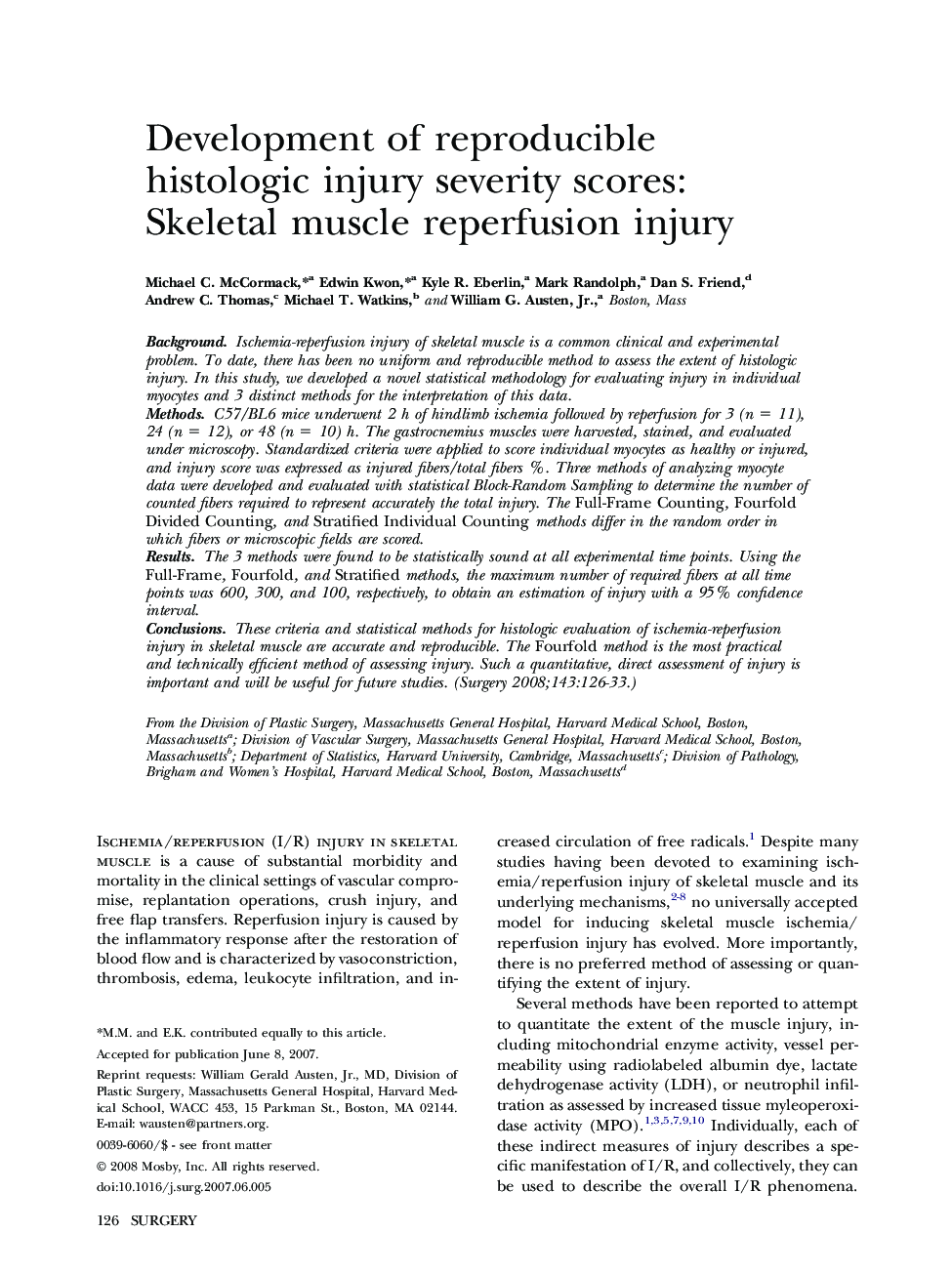| Article ID | Journal | Published Year | Pages | File Type |
|---|---|---|---|---|
| 4308438 | Surgery | 2008 | 8 Pages |
BackgroundIschemia-reperfusion injury of skeletal muscle is a common clinical and experimental problem. To date, there has been no uniform and reproducible method to assess the extent of histologic injury. In this study, we developed a novel statistical methodology for evaluating injury in individual myocytes and 3 distinct methods for the interpretation of this data.MethodsC57/BL6 mice underwent 2 h of hindlimb ischemia followed by reperfusion for 3 (n = 11), 24 (n = 12), or 48 (n = 10) h. The gastrocnemius muscles were harvested, stained, and evaluated under microscopy. Standardized criteria were applied to score individual myocytes as healthy or injured, and injury score was expressed as injured fibers/total fibers %. Three methods of analyzing myocyte data were developed and evaluated with statistical Block-Random Sampling to determine the number of counted fibers required to represent accurately the total injury. The Full-Frame Counting, Fourfold Divided Counting, and Stratified Individual Counting methods differ in the random order in which fibers or microscopic fields are scored.ResultsThe 3 methods were found to be statistically sound at all experimental time points. Using the Full-Frame, Fourfold, and Stratified methods, the maximum number of required fibers at all time points was 600, 300, and 100, respectively, to obtain an estimation of injury with a 95% confidence interval.ConclusionsThese criteria and statistical methods for histologic evaluation of ischemia-reperfusion injury in skeletal muscle are accurate and reproducible. The Fourfold method is the most practical and technically efficient method of assessing injury. Such a quantitative, direct assessment of injury is important and will be useful for future studies.
